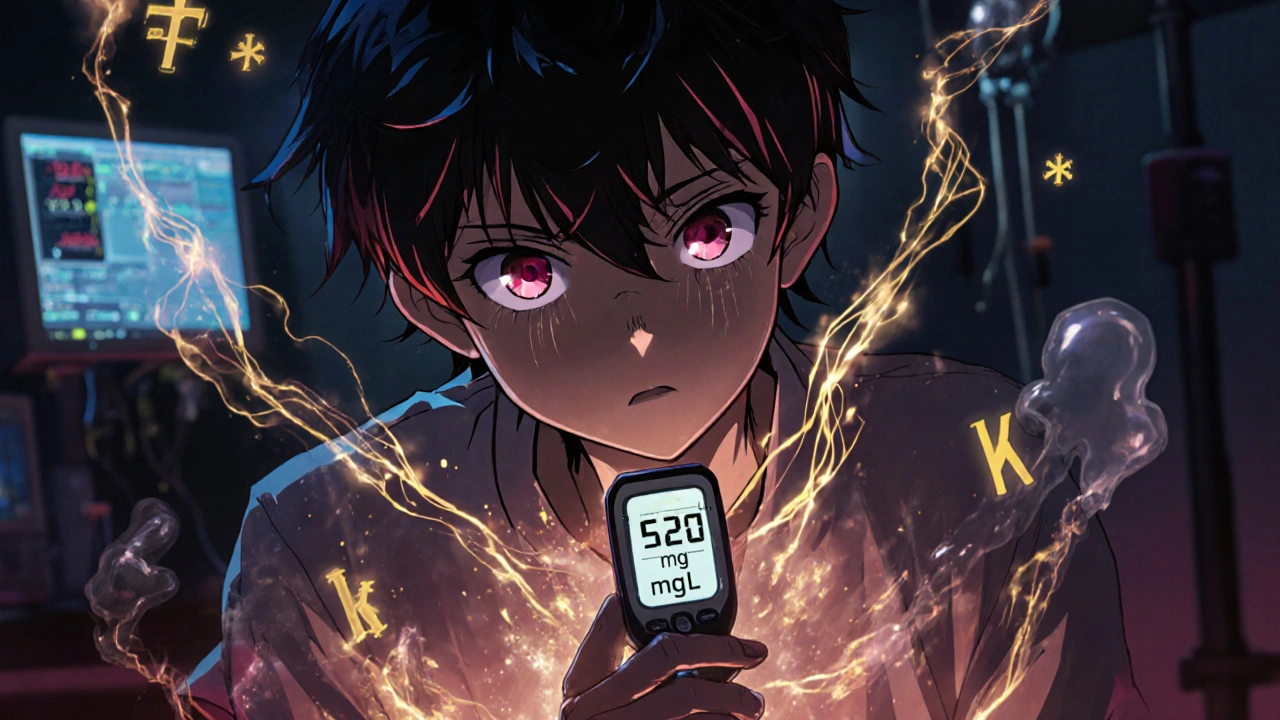Diabetic Ketoacidosis: Causes, Signs, and What You Need to Know
When your body doesn’t have enough insulin, it can’t use sugar for energy, so it starts burning fat instead. That process creates acidic chemicals called ketones, toxic byproducts produced when fat is broken down for fuel in the absence of insulin. Too many ketones in your blood make it acidic — that’s diabetic ketoacidosis, a life-threatening condition that mostly affects people with type 1 diabetes but can also occur in type 2 under severe stress. It’s not a slow creep; it’s a medical emergency that can hit fast, especially if you miss insulin doses, get sick, or have an infection.
High blood sugar is the first red flag, but it’s the combo of insulin deficiency, the core trigger that stops glucose from entering cells, rising ketones, and dehydration that makes DKA dangerous. You might notice fruity-smelling breath — like nail polish remover — because your body is flushing out ketones through your lungs. Other signs include extreme thirst, frequent urination, nausea, vomiting, belly pain, confusion, and trouble breathing. If you’re diabetic and feel off, don’t wait. Test your blood sugar and ketones with a home strip. If ketones are moderate to high and your sugar is over 250 mg/dL, call your doctor or go to the ER. Delaying treatment can lead to coma or death.
DKA doesn’t just happen out of nowhere. It often follows missed insulin doses, new infections like pneumonia or UTIs, heart attacks, strokes, or even severe emotional stress. Some people with type 2 diabetes get it during extreme illness or after starting certain steroids. It’s also common in newly diagnosed type 1 patients who didn’t know they had diabetes yet. What’s critical is recognizing that this isn’t just "feeling bad" — it’s your body screaming for help. The good news? If caught early, it’s treatable with fluids, electrolytes, and insulin — usually in a hospital setting.
What you’ll find in the posts below isn’t just theory. You’ll see real-world advice on spotting early warning signs, avoiding common mistakes that lead to DKA, and understanding how other medications or conditions can push you toward it. Some posts talk about how to manage diabetes safely when you’re sick. Others explain why certain drugs can interfere with your blood sugar control. There’s even guidance on what to do when your insulin pump fails or you forget a dose. These aren’t generic tips — they’re based on what patients and doctors actually deal with. If you or someone you care about has diabetes, this collection gives you the tools to act before it’s too late.
Hyperglycemia: Recognizing High Blood Sugar Symptoms and What to Do in an Emergency
Learn the early and emergency symptoms of high blood sugar, how to recognize diabetic ketoacidosis and HHS, and what steps to take immediately to prevent life-threatening complications. Essential for anyone with diabetes or caring for someone who does.
Read more